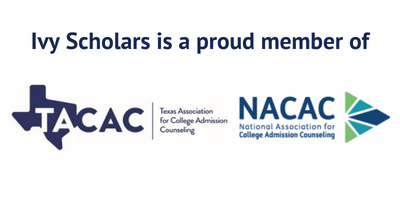Careers in Finance are in high demand. Many students want jobs in finance but aren’t certain how to get one. What classes should they take? What should they major in? Where should they go to college? In this guide, we’ll tell you everything you need to know about finding a career in private equity: a financial subindustry.
Private equity (PE) is an alternative investment vehicle that invests capital into entities not listed on the public markets. PE firms typically have three functions: investing directly into a private company, buying public companies out and privatizing them, and delisting public companies from stock exchanges. Institutional and wealthy individual investors fund these firms, and they carry significant capital for a relatively small number of employees. Jobs within the financial industry are typically categorized into two types: buy-side and sell-side. PE is a buy-side industry. In other words, professionals are actively investing money into businesses in hope of future growth and therefore returns.
Entering the Industry and Job Description
Private equity is an incredibly competitive field that has limited entry opportunities. Firms usually hire from one place: analysts at bulge bracket (large, multinational banks) and elite boutique investment banks. Megafunds, such as Blackstone and KKR, have increasingly been hiring out of undergraduate for junior-level analyst positions, but this remains a relatively new trend. Most successful entries are completed from the Investment Banking (IB) track. Though almost impossible, consultants (especially McKinsey, Bain, BCG), Big Four accountants, and other finance professionals have a chance at entering this recruitment process. However, the entire process is based on the assumption that aspiring PE employees are already at a BB or EB investment bank.
For reference, BB stands for Bulge Bracket. These are banks that have large balance sheets and large investment banking deal sizes. EBs are elite boutiques. These banks do not have balance sheets but still make large deals. Generally, these two types of banks are seen as the most prestigious. Please reference the IB career guide for a more complete explanation.
BBs include Goldman Sachs, Morgan Stanley, JPMorgan Chase, Bank of America, Citi, Credit Suisse, and Barclays. EBs include Evercore, Lazard, PJT Partners, Centerview Partners, Qatalyst, Moelis, Perella Weinberg Partners, and Guggenheim Partners.
IB analysts entering the PE industry begin at the associate level. They are responsible for completing much of the financial modeling for existing deals, potentially sourcing new deals, and sometimes managing duties in companies where their firm has taken a controlling interest. PE job descriptions are much more fluid than IB because of a smaller employee base and the reduced presence of junior employees.

What Aspiring Private Equity Professionals Can Do in High School
PE is incredibly difficult to break into and most people enter the industry at around age 24. However, these firms exist at smaller, regional levels, and are often looking for additional help. PE firms at the local level usually come in the form of real estate investment, though there are some companies that have a respectable amount under management and can take controlling shares in companies. Having family connections always helps, but cold emailing for networking calls and working towards converting them into summer internships is the go-to strategy.
Breaking into megafunds such as Blackstone and KKR is completely impossible at the high school level, unless, of course, you have family connections that can perhaps land them small-time responsibilities at these behemoth firms.
Best Colleges for Private Equity
You should use the same criteria to select colleges as discussed in the IB guide. PE recruiting functions off a similar hierarchy simply because it is inextricably linked to the IB process. Selecting the correct institution leads to a particular caliber of IB offer. The caliber of that IB offer and the general prestige of your university dictates the potential recruitment opportunities. To understand the factors behind this decision, please reference the IB career guide for a more complete explanation.
The hierarchy of schools changes slightly in PE recruitment, however. These firms rely more on general prestige, whereas schools with large populations (such as UM Ross) often shine at the IB level. Harvard and UPenn Wharton, by far, have the most PE recruits, with the differences among schools shrinking as the list goes down.
Note that university pedigree is slightly less important at this level simply because professionals are a few years removed from school at this point. However, overachieving during the IB recruitment cycle (i.e. landing a Goldman Sachs analyst position from UW-Madison) may come back with a vengeance if a headhunter decides to look at such a candidate in a different way. This should not be the case if the candidate makes a good impression on headhunters.
A Note on Headhunters
The PE recruitment process is truly unique in its reliance on headhunters. Usually, people actively looking for jobs hire them to make the search easier. In the IB to PE transition, these headhunters often reach out to promising candidates to offer their services. The entire recruitment process runs through these headhunters and it is incredibly difficult to find a PE associate job without going through them.
Tackling the PE recruitment process also requires candidates to understand headhunters’ responsibilities and biases. They seek to place candidates as quickly as possible to maximize their take-home pay, which can seriously damage some people’s careers. Avoiding this trap requires an intimate understanding of candidates’ positioning in IB, the appropriate types of shops, among other elements of the placement process. Understanding these aspects sets professionals up for explaining their needs to headhunters succinctly and maximizes their chances of landing an offer they truly want. There are numerous headhunting firms involved in PE recruitment. There are generally a few regarded as the best due to their client lists, which include the most renowned firms.

The Best Headhunting Firms:
- Career Partners Inc.
- Henkel Search Partners (HSP)
- Amity Search Partners
- Dynamic Search Partners (DSP)
- SG Partners
Types of Private Equity Firms
Understanding the types of private equity firms is crucial to finding the correct fit. They are categorized by the nature of the companies they invest in and the nature of the deals themselves.
Venture Capital (VC)
VC firms are typically seen as a separate investment vehicle from PE, though they are the same. Essentially, VC is a subcategory of PE. This section is included for informational purposes and the PE recruitment process does not include these. However, it is crucial to understand whether this is your preference before entering PE. VCs invest in early-stage startups for what are usually minority stakes. These are high-risk, high-reward investments that can generate incredible returns in successful cases. Simultaneously, VC firms can lose their entire investment because a portfolio company never reaches profitability.
Most startups today structure themselves by assuming VC investment. Prior to the popularization of these investment vehicles, most companies would bootstrap themselves to maximize early profitability and proof of concept. Jobs and Wozniak working out of a Californian garage is a perfect example of this mentality. However, startups are more appealing now. VC firms have contributed to this rise and promise to be mainstays in this space, especially in the technology industry. Most people find VC investing significantly more interesting than PE, but most people need a technology background to enter the industry. Doing TMT banking at a BB or EB would help if you are seeking to ultimately enter VC, as well as generally doing tech-related roles. Financial modeling is rather rare in early-stage investments, though there are a few techniques. Here, interpersonal skills in evaluating founders’ long-term potential and intimate knowledge of SaaS and other tech-related metrics are crucial.
Growth Equity
Growth equity investing comes later on in a firm’s lifespan. These firms also target minority shares but usually function as accelerators of financial growth. They will research the companies’ financial history and test products out themselves, whereas VC firms sometimes don’t have a finished product to invest in. This informs decisions much more, therefore increasing the relevance of financial modeling and an IB background.
As they invest in later-stage companies, growth equity firms need to be surer of investments and need to hit more often because the returns are not as high. Essentially, every investment must be less of a gamble. Growth equity firms also cover essentially all industries because every industry has companies in this stage of its life cycle, whereas VC only considers technology investable as early as the startup level. This opens up the possibilities for bankers in more niche divisions such as oil and gas. As important as financial modeling is for growth equity, these investment firms also consider founders’ long-term potential among other qualitative factors because these businesses have not achieved full-scale yet. As such, growth equity is a good middle-ground for bankers who wish to extend their exploration time by having as many options as possible.
Buyout
Buyout investing is the last stage of private equity investment. These firms specialize in majority stake takeovers to improve private companies and take them to market, or take public companies and privatize them to make internal improvements. These PE shops are more management and operations-oriented because they acquire businesses and have to make internal improvements to ensure profits during the exit. These investments are also fairly long-term, with most investments lasting 5-10 years.
Megafunds usually specialize in buyout PE because they have the financial might to undertake such investments. They usually do so through leveraged buyouts. In these cases, the buying firm leverages significant amounts of debt, usually between 60-80% of the transaction, depending on how much leeway the banks allow. These transactions require the intensive financial modeling that IB teaches candidates. Buyout PE also functions across all industries as mature companies ripe for private takeover exist across the world in different sectors. These decisions are made with the viability of the core business in mind, as well as apparent improvement areas. These can include changing executive leadership or changing supply strategy to significantly improve profitability. Buyout PE is a perfect transition for bankers as they simply move from the sell-side to the buy-side of many of the same transactions.
Sizes of Private Equity Firms
Making a decision on which firms to recruit for also requires an understanding of size. A PE firm’s size is somewhat proportional to the type of firm it is. Essentially, the smaller a firm, the more likely it is to play in the VC/growth equity space. Larger firms almost always are buyout-oriented. However, there are cases of small funds being buyout firms – they just buy smaller companies – and larger funds being VCs. The latter is quite common in Silicon Valley.
There are three general buckets PE firms fall into in terms of size. These generally relate to the prestige they carry for future opportunities and dictate differences in the type of work analysts do. The three categories are megafunds, upper-middle markets, and lower-middle markets. However, some major firms do not fall into these categories because they position themselves differently. These are covered in the Industry-Specific PE Firms section.
Megafunds
These are the largest PE firms and have the most name recognition. The generally accepted cutoff line for these is above $15 billion in the flagship fund. Aside from prestige, this level of financial might changes the job of a PE associate.
Given the relatively small number of companies within PE funds’ portfolios, usually ranging from about 10-25, megafunds consistently spend over $1 billion per deal. This allows them to contend with the most mature companies and gives them the power to take major public companies private. These firms also take controlling stakes in private companies and such, but their power to privatize is unique simply because of the amount of money they wield.
These companies also tend to have the most intense work cultures because of the sheer amount of capital at stake contrasted with the relatively lean operations. However, they also pay the best and set market compensation.
Examples include Blackstone Group, Apollo Global Management, Carlyle Group, KKR & Co., and TPG Capital.
Some companies such as Silverlake have also raised above $15 billion for their flagship funds, but are not included in the megafund category because they are industry-focused or because their main focus lies elsewhere.
Upper Middle Markets (Upper MMs)
These are more mid-sized firms that have prestige within the finance industry. Some of the most renowned firms are upper MMs and seen at the same level as the megafunds because they dominate a particular sector, geography, or section of the market.
Upper middle markets rarely take public companies private because they do not have the requisite capital to be able to do so. The average investment size is in the range of $100 million to $500 million. As such, they are often able to take controlling stakes in top private companies or smaller public companies. They can also fund Series D or E rounds for top private companies.
Compensation at these firms is usually market-competitive, but slightly less in many cases. The work culture for the top upper MMs is similar as well, though it gets more relaxed as the firm and team size shrink.
Examples include American Securities, Berkshire Partners, and Onex Partners.
Lower Middle Markets (Lower MMs)
These are smaller firms without much prestige in the finance industry. They make some controlling investments but cannot muster enough capital to make significant moves in the market.
Compensation at these firms is usually lower than the megafunds and upper MMs, but the work culture is significantly better. It is also much easier to advance. However, candidates should be careful to actively choose these funds; going upstream is essentially impossible. In other words, working at a lower MM essentially destroys your chances for working for a megafund, whereas people at megafunds can always move lower down the prestige and fund size ladders.
Industry-Specific PE Firms
Some major PE firms do not fall into any of the three main brackets because they have an industry focus. Megafunds, upper MMs, and lower MMs are generalist firms where associates are assigned an industry group or work on all types of deals. However, industry-specific firms do not have this additional filtration because they restrict themselves at the investment level.
Industry-specific PE firms usually exist in two sectors: technology, media, and telecommunications (TMT) or consumer.
TMT examples include: Silverlake, Vista Equity Partners
Consumer examples include: Sycamore Partners, Leonard Green & Partners

A Note on Investment Banking Industry and Product Groups
Banks usually divide their IB services by industry and/or product groups. Industry groups divide the operations by the industry in which their client lies. Product groups divide the operations by the actual action. For instance, the M&A product group executes mergers and acquisitions across industries, whereas the Equity Capital Markets group only functions within its corner of the banking industry. Product groups are becoming more infrequent, though some BBs still use this model. Candidates determined to enter PE after their IB stint should select M&A product groups before any else, with the others having relatively similar opportunities in PE.
Industry groups are the more relevant distinction in terms of PE exits because they determine the type of firms headhunters offer candidates, probably more than they should. IB analysts are, for the most part, still incredibly unsure about the overall path their careers will take. Choosing industry groups, in the beginning, is more about interest and the offers banks have made candidates. So, pigeonholing candidates based on industry groups is not the best idea from an overall industry perspective. However, this does happen and you must accept this reality. The following sections describe the types of PE offers different industry groups usually produce.
Technology, Media, Telecommunications (TMT)
TMT is perceived as the best group in many banks. This is not always true, though it is in many cases. Goldman Sachs (GS) TMT, for instance, is the best group across all banks across the world. Headhunters push TMT candidates into VC and growth equity firms because this industry is perceived to favor up-and-coming companies. Traditional PE recruiting is slightly more difficult, but not impossible. This generalization does not apply to GS/Morgan Stanley TMT because these groups produce rockstars anyone is willing to take on.
Healthcare
Healthcare is an incredibly versatile group. The COVID-19 pandemic has increased its importance and Big Pharma mergers are constants in the modern world. As such, healthcare analysts often have decent deal experience coming out of IB. Headhunters push healthcare candidates into VC and growth equity firms because healthcare/pharma startups are all the rage in Silicon Valley regardless of business viability, as Theranos demonstrated. Healthcare candidates can also have some buyout PE opportunities if they have a solid understanding of debt deals and free cash flow. This really depends on the types of companies analysts work with during their IB stint.
Consumer
Consumer is also incredibly versatile because these groups deal with asset and debt behemoths, creating for a well-rounded experience. Headhunters have a bias for buyout PE firms here because these groups deal with only mature companies, but many analysts also leave to distressed debt PE firms because they carry extensive experience in dealing with debt in consumer companies.
Industrials
Industrials is quite a general industry group as well. Banks without energy groups often lump them into this division, creating a wealth of diverse experience for these analysts. Industrials creates incredible exits to buy out PE because much of the work these candidates do matches with megafund acquisitions. They also produce opportunities in distressed debt funds because industrial companies often have large stores of debt and need restructuring.
Oil and Gas
Oil and gas groups usually have limited exit opportunities into PE because the modeling and financial skills analysts learn in these groups are different from the traditional M&A work. As such, the exits are usually limited to PE firms specializing in oil and gas or energy because of the transferable skills. Since most oil and gas groups sit in Houston, the opportunities are usually concentrated in the South.
Financial Institutions Group (FIG)
FIG tends to pigeonhole analysts into finance-specific PE firms because their modeling and skillset are also different from the usual industry groups. This applies in mid-tier BBs and EBs, where FIG is not the strongest group and seems to merely pigeonhole people into certain groups. However, FIG at major firms such as GS – where it is perceived as the second-best group – will generate essentially any offer candidates wish.
Real Estate
This group is generally the worst at every bank, producing significantly worse exits into PE compared to the rest of the groups. Real estate IB is often considered disconnected from traditional M&A because it requires vastly different modeling and these groups often hire people from non-traditional backgrounds. Finding people from a real estate background is not uncommon here. As such, this group usually has similarly non-traditional exits, usually into real estate and/or corporate development. PE opportunities are significantly rarer and are usually restricted to real estate PE firms.
The Recruiting Process
PE recruiting is usually reserved for working professionals. As such, the preparation process – ranging from building a resume to gaining relevant work experience – is not as much of a chore. These elements are already assumed and candidates should have already experienced organizing these in previous recruitment processes (IB). This section will outline how the PE recruitment process unfolds.
Before doing so, you need to know that there are three main recruitment pathways. On-cycle recruiting accounts for almost all of PE hiring per year and this guide will focus mostly on it. However, there are two alternative pathways: off-cycle recruitment and undergraduate recruitment.
On-Cycle Recruitment
The on-cycle recruitment process for PE is even more intense than for IB. IB candidates begin recruiting for their junior internships – which later convert into full-time offers – approximately 12-16 months prior to the start date. This timeline is further pushed back for PE, reaching 20-22 months in advance. This means IB analysts are merely a few months into their role and already have to recruit for PE. This early recruitment is the result of the intense competition in PE. These companies are competing for the top minds in the world in a morally gray environment with no regulation. So one firm deciding to begin recruitment incites a cascade, with everyone looking to get the jump on others. Even PE firms have begun complaining about this system. This competition results in one of the most ridiculous recruitment processes because IB analysts are not even good at their present jobs by the time they have their next one. However, this is the reality and we must collectively deal with it.
An example to display the power headhunters have: a renowned headhunting firm, SG Partners, inadvertently began outreach to IB analysts in September, a staggering 23 months in advance of the job opening. Numerous PE firms began preparation for interviews despite not even knowing the plans on the horizon. Thanks to SG Partners quickly realizing its mistake, the crisis was averted. Though this guide already included a note on headhunters earlier, this must be emphasized. HEADHUNTERS DICTATE THE PROCESS.
Phase 1: Preparation
Preparing for PE recruitment is an affair that begins before analysts even begin their IB jobs. This requires brushing up on behavioral and technical preparation. Behaviorals remain fairly similar to IB recruitment and the story carries special importance. Having a terrible story is enough to remove GS TMT analysts from contention. Technical preparation is different from IB simply because PE firms are looking to buy firms, often through debt transactions. As such, you must be comfortable with LBO (leveraged buyout) models and similar buy-side focused valuations. DCFs still hold high importance. There is no time during the process to focus on these interview elements, so preparing for these must be done in advance.
Headhunters must be able to differentiate your resume from a sea of analysts. They reach out to analysts before the process begins and immediately ask for resumes. Based on these documents, they decide to schedule chats with the most competitive candidates first. Essentially, the resume shapes the headhunters’ view of who has a great chance of breaking into a megafund and who does not. Resumes are usually the second step to making an impression. The first one is your placement, which has already been decided by your junior year of college. However, the resume can make or break your candidacy. A GS TMT analyst can fall behind in the process due to a weak resume and an MM IB analyst can become a top target (the second part is an exaggeration, but you get my point).
For clarification, MM stands for middle-market. These banks have balance sheets, but small deal sizes. Essentially, they are smaller versions of BBs and do not carry as much prestige. Please reference the IB career guide for a more complete explanation.
IB analysts should already know how to construct good resumes by this stage. The IB guide briefly outlines this, but reference online guides if still confused. Deal experience can really set analysts apart during PE recruitment. So, proactive analysts should try to involve themselves in a deal as soon as possible.
Phase 2: Headhunter Outreach
Headhunters begin their outreach in a coordinated effort, usually lasting around two days. In the most recent recruitment cycle, headhunters reached out to analysts on August 30 and 31. These headhunters introduce their firms, what they do, and sometimes include their client list. They ask for candidates’ resumes, which should already be refined at this point. They also attach datasheets candidates must fill out. Though headhunters only recommend these to take 10-15 minutes, ensure maximum attention is paid to these because they often dictate how the recruitment process goes.
These intake forms contain preferences for strategy, geography, industry, among other factors when selecting a potential PE firm to pick from. Reference this guide and the details it has about different types of firms and industries to inform this decision as well as experience from current PE professionals. Being incredibly specific in these forms is key in landing desired interviews because the headhunter now knows how to best serve you.
Phase 3: Headhunter Meetings
This cycle is where the sorting begins. Headhunters examine the resumes and datasheets from their outreach emails to determine the most competitive candidates and set meetings up with them first. This usually occurs about a week after the initial outreach emails. In the most recent recruitment cycle, headhunters began meeting with candidates after Labor Day.
The most qualified people meet with headhunters first because PE firms also recruit in a hierarchy. Megafunds hold their interviews first and the upper MMs and smaller PE firms follow. Most of these early candidates are from top BBs and EBs, and the top groups within them. However, an underwhelming showing in the resume and datasheet can also ensure these top analysts do not receive a follow-up to the initial outreach email.
Around the same time, mid-tier candidates from worse BBs and EBs often receive the silent treatment from headhunters. However, this is not the end of the world because megafunds have been increasing their interviewing period over time. Ill-prepared candidates from the best groups often get rejected by their expected employers, so there is always an opportunity for the lower-tier BBs and EBs. In this way, the PE recruiting process is more of a meritocracy than the IB process. Firms almost solely base their assessments on interviews. So, if you have put forth the work, you will do well.
Headhunter meetings are not casual. They are not your friends. They exist to maximize their paycheck from their clients – the firms they are recruiting candidates for. As such, they are actively judging candidates during these meetings. For these, you should have your stories fully memorized and speak about your deal experience. In doing so, you must show a diversity of experience and an ability to open up your chances to more types of firms. However, you can also laser focus their headhunters to a few firms by restricting this description to a particular industry or niche. IB analysts are often shy with headhunters, never saying if they are dying to work for one of their clients. Say it out loud and the headhunter will take note. There is no guarantee they will connect you with that firm, but they will actively consider it, whereas they never may have if the candidate never spoke up.
Speak to the worst headhunters first. These have the worst client lists and can serve as realistic practice before trying with the giants.
Phase 4: Pre-Interview Events
Headhunters arrange these pre-interview events in the week between the initial headhunter meetings and the interview periods with firms. According to the timeline for the most recent cycle, these events occurred from about September 4-11. Prior to the COVID-19 pandemic, this process took weeks, but has accelerated over time with analysts predicting the time will shorten over the coming cycles. These events are designed to introduce candidates to potential firms of interest.
Though these are more casual networking events, PE professionals actively judge candidates on their personability and professional flair. A pre-interview is exactly what it sounds like, the interview before the actual interview. However, you should remember that these are not strictly professional settings where people live and breathe PE. These events are designed for employers to understand the incoming class on a human level. Some firms do have more formal events, but the logic is the same. Make a good impression and it will lead to good things.
Invitations to pre-interview events do not guarantee an interview but do mean that you are likely to receive an interview given you don’t skip the event or make a terrible impression.
Phase 5: Interviews
Though interviews in the on-cycle last till about December, it is a sprint followed by a slowdown. That sprint is faster than Usain Bolt and the slowdown is Tyson Gay – still incredibly fast. In the most recent recruitment cycle, interviews began on September 13.
The top candidates receive interview emails in the late afternoon of the day the interview season begins. They must get their affairs in order because the next few days are incredibly hectic. The interviews begin that evening, usually around 6 PM. Candidates then stay in that cycle of back-to-back interviews, often until around 6 AM the following day. The first PE offers are handed out that night, with others following throughout the morning. Many of these are exploding offers.
A Short Interlude to Explain Exploding Offers
The quick nature of PE recruitment essentially ensures all offers a candidate receives are exploding offers. These last a short time. Either you must immediately accept or have a few hours to do so. This allows for little time to shop the offer around or even decide whether the IB analyst wants to leave their current job for the firm that accepted them. Be prepared to receive exploding offers when entering PE recruitment.

Phase 5: Interviews (Continued)
The second round of megafund interviews begins soon thereafter, usually around 7-8 AM, allowing candidates to get a quick nap in. Upper MM firms such as Sycamore are also included in this fray. Headhunters let more candidates into this second cycle, progressing down the pecking order of perceived quality. The second day also goes well past midnight. The next few days also have this mad frenzy of interviews with offers being extended on the same day, but these sessions no longer go past midnight. A few weeks into interview season, the process slows down to the point where the first-round interview and eventual offer are separated by 3-4 days. This process usually persists till December, but progressively dies down.
Interviews are first come, first served. The analysts who receive interview offers in their email inboxes first must schedule them as quickly as possible because they lose their advantage when someone lower down the pecking order gets his or her name into the interview sheet earlier. There is no room for hesitation in the PE recruitment process. Once you have decided to recruit, they must go without a second thought.
Off-Cycle Recruitment
This section is significantly less detailed because the process is also significantly less detailed. The main difference between on-cycle and off-cycle is the timeline. During the on-cycle, candidates are recruiting for jobs they will have in two years. Accepting a job in the off-cycle means that the candidate begins working immediately. During the COVID-19 pandemic, the off-cycle merged into the end of the on-cycle.
The off-cycle recruitment process is meant for people recruiting for smaller firms, roles outside of New York, people from non-traditional backgrounds, and those who were rejected during the on-cycle. Unlike the on-cycle, this process is almost completely dependent on individual networking ability, much like the original IB recruiting.
You must cast a wider net here because you will never land an offer being as restricted as they were during on-cycle recruitment. There are not as many firms recruiting off-cycle and the aim is to land a job offer, not to be picky.
The interview process remains roughly the same in terms of content and rounds. However, it is variable in its timing and can often take months because firms are not pushed by the competition of on-cycle recruitment.
Undergraduate Recruitment
This form of recruitment remains severely underdeveloped because most PE firms do not recruit out of undergraduate. The reasoning is simple: PE firms do not want to waste their time training juniors who have no work experience.
The key to breaking in as an undergraduate, thus, is to break these stereotypes. Have experience making and working on deals. This is mostly impossible to do in the first place, which is why barely anyone enters PE out of undergraduate, but it can be done.
The first step is going to a prestigious university at the top-tier. Students from Harvard, Wharton, and schools in that bracket are essentially the only ones who have a prayer at entering PE out of undergraduate. A common pattern among many of the direct PE recruits is two IB internships at a BB or EB. Candidates from elite schools are able to do this on occasion due to their incredible alumni networks. It is not common, but a few manage to land a GS-esque internship for their sophomore summer. The other way to achieve this effect is to be a diverse candidate at a less prestigious school. By recruiting for a sophomore diversity program at a BB or EB, diverse students can attain an IB internship in their sophomore year and re-recruit for an IB internship in their junior year.
After gaining these two internships, people looking to enter PE usually begin contacting alumni at PE firms as their ins into the recruitment process. Joining PE after undergraduate is almost solely a networking operation. Networking within the bank hopefully lands a first-round interview and things progress from there. This is an incredibly shoddy process with no clear precedent, but high barriers to entry.
Deal experience is absolutely essential because convincing a PE firm to take an undergraduate on is the equivalent of saying that he or she has the same experience as a first-year IB analyst. One junior-year internship is not enough to do this. Two of them give you a chance, but getting a chance to interview for PE is still not a guarantee.
Private Equity Progression and Compensation
| Position Title | All-In Pay (USD) | Carry | Promotion Timeline |
| Analyst | 100K – 150K | No | 2-3 years |
| Associate | 150K – 300K | No | 2-3 years |
| Senior Associate | 250K – 400K | Small, if any | 2-3 years |
| Vice President | 350K – 500 K | Some | 3-4 years |
| Director | 500K – 800K | Considerable | 3-4 years |
| Managing Director | 700K – 2M | Large | N/A |

Short Note on Carry
Carry is a performance fee, in the form of a portion of future profits from an investment, paid to general partners or fund managers. Carry is calculated as a percentage of the return on investment after limited partners have been paid out 1X their investment. Carry is split (though not always equally) between partners.
Summary
PE is ultimately one of the most demanding finance industries. Entry into PE is almost exclusively after an IB analyst stint, though breaking in after undergraduate or an MBA is possible. The industry itself differs significantly from IB because employees actively invest in a PE associate role, whereas they execute deals as middlemen in IB; this is the difference between the buy-side and sell-side. To recap, buy-side jobs include active investing, whereas the sell-side is the opposite side of the same process. As such, PE firms and investment banks often find themselves on opposite ends of the same meeting. Many PE associates credit their IB analyst stints for being able to recognize the other side’s tactics when they enter PE.
PE’s hiring process is one of the most unique across industries due to its hurriedness and exclusivity. For top candidates, it can be over in a weekend, while the rest of the competitive analyst pool fights for the remaining slots over the next few weeks. There are significantly fewer PE jobs when compared to IB, only intensifying this competition.
To reiterate, PE is incredibly demanding and difficult to enter. Hopefully, this guide provides some direction to you before you confront the trials and tribulations of this career path. As with any industry, hard work, talent, and a little luck will help you a job in Private Equity.








